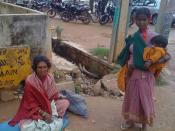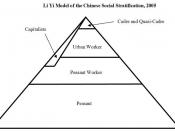To understand the relevance of poverty to nursing we first need to determine what poverty actually is, many sociologists have come up there own definitions of poverty. Townsend's (1979, 125-6) study of poverty in the Britain states that individuals"can be said to be living in poverty when they lack the resources to obtain the type of diet, participate in the activities and have living conditions and amenities which are customary , or at least widely encouraged or approved in societies to which they belong.""Poverty is the state of being without, often associated with need, hardship and lack of resources across a wide range of circumstances. For some, poverty is a subjective and comparative term; for others, it is moral and evaluative; and for others, scientifically established. The principal uses of the term include: Descriptions of material need, including deprivation of essential goods and services, multiple deprivation, and patterns of deprivation over time.
Economic circumstances, describing a lack of wealth (usually understood as capital, material goods, or resources, especially natural resources). The meaning of "sufficient" varies widely across the different political and economic parts of the world. In the European Union, poverty is also described in terms of "economic distance", or inequality. Social relationships, including social exclusion, dependency, and the ability to live what is understood in a society as a "normal" life: for instance, to be capable of raising a healthy family, and especially educating children and participating in society." (www.en.wikipedia.org)Poverty affects men, women, young and old, black and white, so can such a concept, so controversial, affecting millions all over the world be so misunderstood and ignored by so many. The population in Britain today stands at just over 60 million, 13 million of which live in poverty and almost 4 million of which are children. These figure are...


